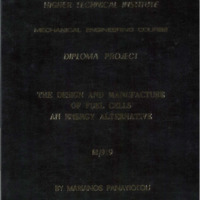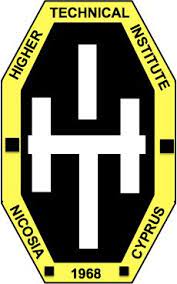The design and manufacture of fuel cells an energy alternative
- Τίτλος
-
The design and manufacture of fuel cells an energy alternative
- Θέμα
- Nanostructured materials--Design and construction
- Fuel cells--Design and construction
- Hydrogen as fuel
- Δημιουργός
-
Panayiotou, Marianos
- Πηγή
- Higher Technical Institute
- Το πλήρες κείμενο είναι διαθέσιμο από το Υπουργείο Ενέργειας, Εμπορίου Βιομηχανίας και Τουρισμού.
- Εκδότης
- Library of Cyprus University of Technology
- Ημερομηνία
- 2001
- Συνεισφέρων
- Angastiniotis,Nicos
- Δικαιώματα
- Απαγορεύεται η δημοσίευση ή αναπαραγωγή, ηλεκτρονική ή άλλη χωρίς τη γραπτή συγκατάθεση του δημιουργού και κάτοχου των πνευματικών δικαιωμάτων.
- Μορφή
- Γλώσσα
- en
- Τύπος
- text
- Αναγνωριστικό
-
MED0512
- Σύνοψη
-
The Automobile, it is fair to say, changed the industrial and social fabric of most countries around the globe. More people are driving more cars in 2001 than ever before. But the car has contributed to our air and water pollution and forced us to rely on imported oil, helping to create a significant trade imbalance. Today many people think fuel cell technology will play a pivotal role in a new technological renaissance - just as the internal combustion engine vehicle revolutionized life at the beginning of the 20th century.
Today's innovations In fuel cell technology are addressing local, national, and global environmental needs. The decision to become involved with bringing these innovations into our daily lives is a strategic career opportunity. Fuel cells offer an opportunity for innovation. Helping to make fuel cells be a part of the solution might be a challenge that's too exciting to ignore.
Lack of public education and understanding about hydrogen is a major barrier for initial implementation of hydrogen energy technologies and is an important prerequisite for acceptance of hydrogen outside the scientificltechnical research communities.
The development of safe, practical, and economically competitive hydrogen technologies and systems to meet transitional and large-scale energy needs offers high pay-offs due to improvements in end-use efficiency and emissions and has long been envisioned as the desired energy pathway of the future.
The initiation of this project falls within the activities of the Nanomaterials Research Center (NRC), a newly established center at HTI which serves as a bridge for technology transfer between HTI and the technology users (industry at large). The primary mission of NRC is to develop new methods for the economical production of nanostructured metals, ceramics, and their composites. Under this center, two operating divisions have been established, each with its own application goal(s) and commercialization strategy: (1) nanopowder synthesis, which is commercializing high rate production of non-agglomerated nanoparticles and (2) large area deposition of coatings and consolidation of net-shaped parts. Both of the divisions focus on the commercialization of advanced materials processes for enhanced mechanical, thermal an.a electrochemical properties.
Current programs are focused on methods for the production of nanostructured powders, nanophase coatings (wear resistant surfaces, thermal barriers, selective surfaces for solar thermal and photovoltaic fabrications, semi-permeable membranes, thick film electrolytes/electrode systems for fuel cells) and nanophase composites (gas turbine engines, bulletproof vests and porous membranes).
- Πολυμέσα
-
 MED0512.pdf
MED0512.pdf
Τμήμα του The design and manufacture of fuel cells an energy alternative


